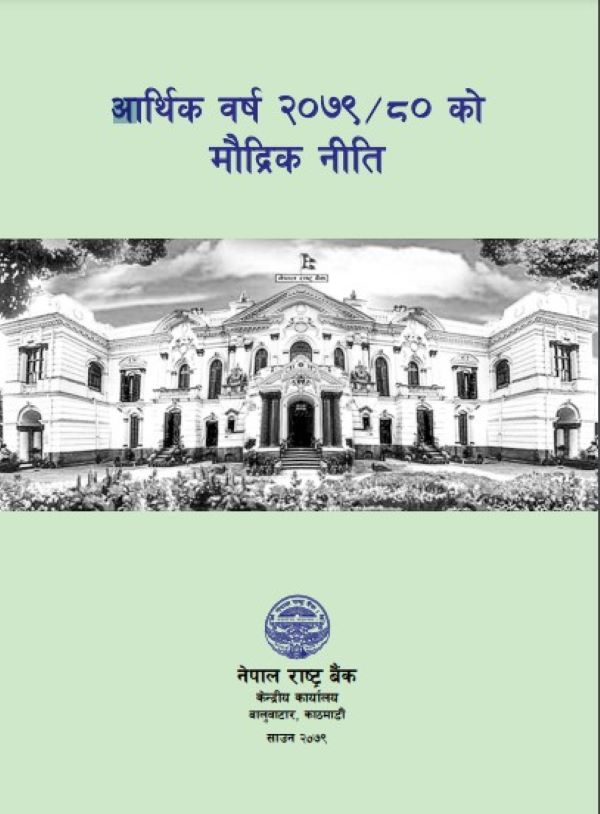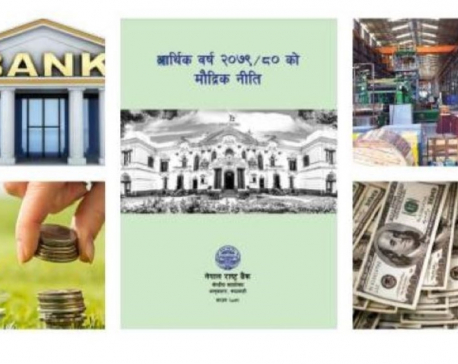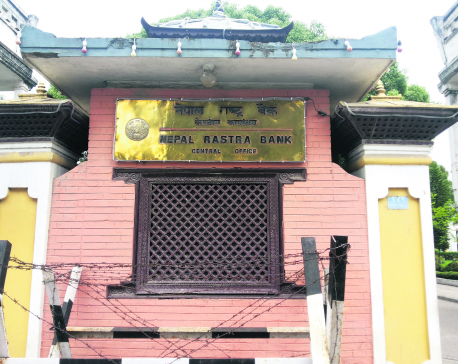
OR
#Monetary Policy FY 2022/23
Tightening of credit supply won’t affect govt’s economic growth rate target: NRB
Published On: July 22, 2022 07:45 PM NPT By: Republica | @RepublicaNepal

KATHMANDU, July 22: Nepal Rastra Bank (NRB) on Friday said that the tightened monetary policy will not affect the government in achieving its targeted economic growth, but will only control the loans being floated to the unproductive sectors that includes the excessive imports.
Through the monetary policy for the fiscal year 2022/23, the central bank has raised the mandatory limit of cash reserve ratio (CRR) and Statutory Liquidity Ratio (SLR), which are among the main tools of the apex monetary regulator to reduce the bank’s credit supply in the economy. For the next fiscal year, the CRR has been increased to four percent from existing three percent.
Likewise, the SLR has been raised to 12 percent from the existing 10 percent for commercial banks. The limit of SLR for development banks and finance companies has been raised to 10 percent from earlier 8 percent and 7 percent, respectively.
As an additional measure to check excessive money supply, NRB has increased the bank rate by 1.5 percent to 8.5 percent. Likewise, the maturity time of the standing liquidity facility has been reduced to five days from seven days. The central bank has also targeted to reduce the threshold of private sector loans to 12.6 percent at maximum from 19 percent.
Speaking at a virtual press meet, NRB’s Executive Director Prakash Shrestha said the central bank has adopted alternative measures despite controlling credit expansion in order to support the government targeted economic growth. “A lesson was learned even last year that the excess credit expansion may not help achieve high economic growth,” Shrestha said.
According to Shrestha, NRB will be imposing differentiated interest rates for the trading and production sector, giving more respite to production businesses than import oriented trading. “In addition the risk of possible liquidity shortage caused due to high CRR will be addressed by the measures like continuity to refinance facility, provision of allowing debentures in credit-deposit ratio and deferral of implementation of counter cyclical buffer,” he added.
The central bank has also extended the deadline of maintaining a mandatory CD Ratio of 90 percent by the banks to the end of fiscal year 2022/23. Earlier, the banks were asked to maintain this regulatory measure as of this mid-July, which the banks have been blaming as the main cause behind the liquidity crunch.
You May Like This

NRB seeks to address current economic problems thru a tight monetary policy; measures adopted not enough: Analysts
KATHMANDU, July 25: Last Friday, Nepal Rastra Bank (NRB) Governor Maha Prasad Adhikari announced the monetary policy for fiscal year 2022/23,a... Read More...

NRB to tighten loans to private sector, says it will be maintained at maximum of 12.6 percent
KATHMANDU, July 22: Nepal Rastra Bank (NRB), in a bid to tighten the loans to private businesses, has targeted to reduce... Read More...

NRB releasing monetary policy for FY 2022/23 today
KATHMANDU, July 22: Nepal Rastra Bank (NRB) is unveiling its monetary policy for fiscal year 2022/23 on Friday. ... Read More...



Just In
- World Malaria Day: Foreign returnees more susceptible to the vector-borne disease
- MoEST seeks EC’s help in identifying teachers linked to political parties
- 70 community and national forests affected by fire in Parbat till Wednesday
- NEPSE loses 3.24 points, while daily turnover inclines to Rs 2.36 billion
- Pak Embassy awards scholarships to 180 Nepali students
- President Paudel approves mobilization of army personnel for by-elections security
- Bhajang and Ilam by-elections: 69 polling stations classified as ‘highly sensitive’
- Karnali CM Kandel secures vote of confidence















Leave A Comment